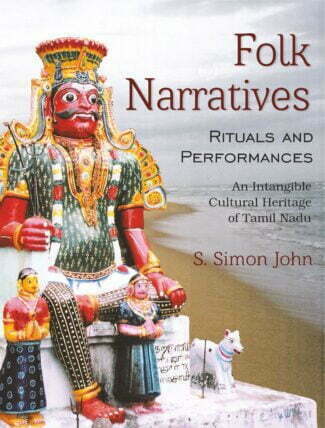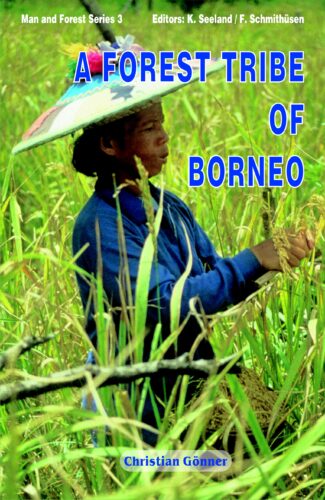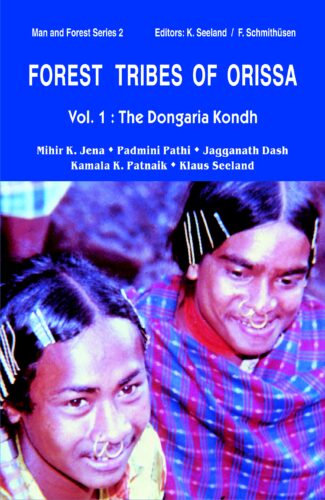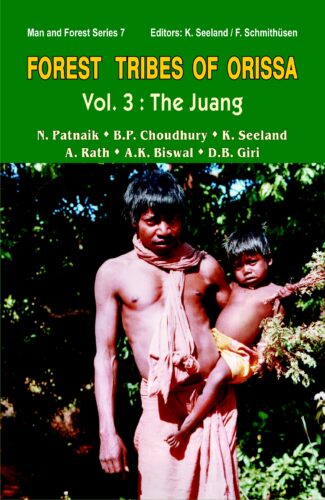Showing 13–24 of 77 results

This work focuses on the various facets of queer activism, using different art forms like cinema, photography and literature to lay bare the queer and spatial politics of contemporary India. The key issues that have been explored through this book are necropolitics, issues surrounding sex-reassignment surgery (SRS), trans-feminism, trans-misogyny, translation of the queer geographies including deathscapes, AIDs citizenship and queer flânerie.
Representation of non-normative sexualities is still a tantalizing dream in India, even within the oblique and supposedly more liberal platforms like art and literature. Catering to this need, this study focuses on the exploration of the deviant sexualities in cinema, photography and literature, specially in the Indian context. Unfortunately, even within the queer artistic explorations, hijras have not been much represented and therefore the first part of the book aims to excavate the multiplicity of the transgender lives by analysing various art forms, having transgender cinema and hijra photographic series as the major thrust areas. These tales of plain subjugation hide convoluted issues like necropolitics, overlap among sports, gender identity and nationalism, crazy-queen syndrome, pansexuality, transfeminism and transmisogyny.
The second part of this book deals with the contemporary gay and lesbian literature and how a specific kind of spatial appropriation is visible there. Through these artistic works, there is an attempt to excavate the specific Indian queer spatial experiences which are quite different from the visibility-centric coming out narratives of the West. As opposed to perceiving invisibility only as a monolithic technique of erasure, these works demonstrate that secrecy and camouflage are also strategies to combat the insidious effects of homophobia. And since Indian spatial configuration produces many homosocial spaces, the unique coexistence of homo and hetero desires is a specific feature of Indian ethos. Thus, the mutually symbiotic relationship between art and emancipatory politics is quite evident from the detailed discussion on various art forms that depict queer lives. The key issues that have been explored through this book are necropolitics, issues surrounding sex-reassignment surgery (SRS), transfeminism, exploration of queer geographies including death scapes, AIDs citizenship and queer flânerie. It indubitably legitimizes somewhat the role of art in queer politics at a fundamental level.

The book is a meticulous research work based on field study that delves deep into the need for the empowerment of the aged while analysing the factors that lead to disempowerment in the old age as also the social role of old-age homes in mitigating the difficulties of the aged.
The book emphasises on a deeper understanding of ageing in the society of today, viewing it as a precarious process, both at the individual and at the societal level. It takes into consideration the position of the aged within the family and in the society, and the changes that have come about over the last few decades. Effects of globalization, break-up of the joint-family system, and the growing materialism and commercialization of society make the elderly viewed only from the ßeconomicû perspective.
The book examines certain theories on gerontology, pointing out that the workable theories should focus more on application so that the aged can benefit from such theories. It analyses the literature on the old: how different scholars and specialists have viewed ageing and its different aspects like the impact of genetic influences and the environment on ageing. Based on a field study, involving elderly from all castes and religious groups both in urban and rural areas, it delves deep into the need for empowerment of the aged. It argues that religion, community and the institutional stay have a direct correlation with the empowerment and disempowerment process, which has more impact on the upper than the lower castes. It undertakes case studies and comes up with interesting and significant observation. Personal income is considered the main source of empowerment. It significantly views institutional care of the old in the context of empowerment and disempowerment, analysing factors that force the old to choose to live in the old-age homes.
The volume is a meticulous research work that will prove extremely relevant to scholars and students as a sociological study on ageing and the elderly especially in the Indian context.

Presenting a comprehensive product profile of Orissas forests, the volume studies reasons for underutilization of the states essential forest produce by tribal communities and proposes measures to help tribals reach this forest resource and thus strengthen their economy.
This volume is the 4th in the ongoing Man and Forest series a series trying to highlight the relevance of indigenous knowledge of various tribal communities in the sustainable management of forests and local resources more specially against the growing challenges of economic development vis-à-vis environmental hazards and a declining resource base. Orissas forests, covering a little over 57,000 sq km (or 36.72% of the states geographical area), are known to have a profusion of minor forest produce (MFP) which has been upgraded due to its importance for tribal livelihood and is called Essential Forest Produce (EFP) through the book. It comprises simple fodder and fuelwood to baffling medicinal herbs, besides numerous economically important plants yielding dyes, tannin, fibres, flosses, essential oils, edible fruits, seeds, leaves, honey among many other items. Yet, despite its enormous economic potential, about three-fourths of this forest wealth has so far been unutilized by the tribal communities largely because of its inaccessibility. With a holistic product profile of Orissas forests, an eminent anthropologist here looks for the rationale behind the vastly deficient utilization of its EFP identifying the entire range of causes: from the tribals incapacity to reach this forest resource to their exploitation by middlemen/traders/moneylenders to the larger forest policy issues. Dr Patnaik also proposes measures which would help tribals not only to actualize the inherent potential of EFP but, in turn, strengthen their economy as well. It is a painstaking empirical study of interest to social anthropologists, environmental activists, foresters, development economists, forest resource economists planners and policy-makers.

The book discusses the history and importance of ethnobotany with specific reference to certain tribes of the Odisha state. It provides the cross-cultural comparative ethnobotanical descriptions of 210 species of plants used by the communities for various purpose.
Understanding the ecological knowledge of tribal and rural societies is necessary to conserve and sustain natural resources. This volume discusses the history and importance of ethnobotany with specific reference to four tribal communities of Odisha, India. It begins with an account of the nature of the tribes involved in the study. Based on participatory fieldwork, it presents an insider’s account of the tribal culture and its relationship with plants. It provides the ethnobotanical descriptions of 210 species of plants belonging to 77 families, presenting their local names, origin and the medicinal, cultural, culinary, economic, ecological uses of the species. It takes up study of the plants used by tribes in the drug-based and spiritual healing processes elaborating the philosophies behind knowledge transmission such as divination, hereditary, discipleship and kinship. Related aspects such as disease diagnosis, diet restrictions and rituals are depicted in detail. There is a special chapter on forests and non-timber forest products (NTFPs) that details the efforts of communities in forest conservation, their land-use patterns, forest classification systems, list of NTFPs and their harvest-consumption patterns. It also deals with the role of NGOs, middlemen and government agencies in this. Throughout, the emphasis is on the philosophical relationship of the communities with their ecosystem.
The book would prove extremely useful to policy-makers, academicians, social workers and general readers looking forward to accompany the tribal communities towards ethno-sensitive development.

This book is an indispensable guide for an up-to-date system of values. What once used to be deadly sins threatening human salvation have now become socially acceptable; envy and greed are the driving forces behind a ruthless economic world. The deadly sins are as relevant today as ever before and it would be advisable not to leave the field open, but rather to counter them with a foundation of values that are up to date.
This book is an indispensable guide for an up-to-date system of values. What once used to be deadly sins threatening human salvation have now become socially acceptable; envy and greed are the driving forces behind a ruthless economic world; there are outbreaks of anger on the streets and in the football stadiums. The name of the game is manifold: stubbornness, impatience, narcissism and disloyalty.
Notker Wolf has taken an look at an interesting development. He finds examples in the Bible, in the ancient myths, in current affairs. His conclusion: the deadly sins are as relevant today as ever before and it would be advisable not to leave the field open to them in our (western) economic and social systems, but rather to counter them with a foundation of values that are up to date. Readers will recognize themselves and our day and age in the mirror of this book.

This illustrative monograph systematically documents, investigates and discusses different aspects of Intangible Cultural Heritage (ICH) of Tamil Nadu childrens folklore, proverbs, material folk culture, oral narratives, folk gods and goddesses, and ritual practices and enables one to grasp the rich cultural heritage of Tamil Nadu at ease.
Folk Narratives: Rituals and Performances reflects the world-view of the traditional societies and it is considered as an Intangible Cultural Heritage (ICH) of a particular community or society. This study investigates the culture, in a particular sociocultural context, of the multifaceted Tamil society through numerous rituals, offerings, vows, customs, practices, belief systems, performing folk arts, fairs and festivals, dance and music, material culture, etc. which are deeply rooted in their cultural moorings, and practised and closely associated with the folk religion, life-cycle ceremonies and social psychology.
This illustrative monograph systematically documents, investigates and discusses different aspects of ICH of Tamil Nadu childrens folklore, proverbs, material folk culture, oral narratives, folk gods and goddesses, and ritual practices. A number of colourful photographs enable one to grasp the rich cultural heritage of Tamil Nadu at ease.
The monograph will be of interest to scholars and researchers across humanities and social sciences especially those in folklore, anthropology, sociology, cultural studies, religion, ritual studies, art and performance studies. It will also appeal to the general reader.

Christian Gnner takes the reader to the Dayak Benuaq village of Lempunah in Borneo (Indonesia), offering an insightful analysis of the resource use patterns of the local tribal population covering swidden agriculture, mixed forest gardens, rattan gardens, rubber gardens, and the non-cultivated forest in-between and temporal and spatial aspects of life.
Here is the third volume in the series Man and Forest: a series trying to highlight the relevance of indigenous knowledge of various tribal communities in the sustainable management of forests/local resources against the growing challenges of environmental hazards and a declining resource base. The volume takes the reader to the Dayak Benuaq village of Lempunah in Borneo (East Kalimantan, Indonesia) where, for over three hundred years, the local tribal population has made extensive use of its forest resources. More than a hundred locally-differentiated rice varieties and 150 other crops are cultivated over a mosaic forest of 9,200 ha. Besides maintaining a high level of bio-diversity, Lempunah villagers are managing an enormous reservoir of flora and fauna for their extended subsistence economy, including trade with various forest products over long distances. Market fluctuations and other uncertainties here are coped with by resource diversification and a high dynamic flexibility in switching between the use of resources. Together with vivid descriptions, Christian Gonner offers an insightful analysis of local resource use patterns, covering swidden agriculture, mixed forest gardens, rattan gardens, rubber gardens, and the non-cultivated forest in-between and temporal and spatial aspects of life in Lempunah. Christian Gonner has, for this study, applied ethnological, ecological, and geographical field-research methods.

This is the sixth monograph in the series Man and Forest and the second volume to deal with an Aboriginal tribe of Orissa. The authors, after ten years of intensive research, give an account of how the Kuttia Kondh, a tribal community in transition, classify the components of nature, and of their social organisation, religious beliefs, etc.
In the management of renewable resources, forests have undeniably a vital role, and today, as never before, their conservation is an urgency. In view of this dire necessity the series Man and Forest tries to highlight the relevance of indigenous knowledge of various South Asian tribal communities in the sustainable management of forests/local resources more specially against the growing challenges of economic development vis-a-vis environmental hazards and a rapidly declining resource base. A scientific inquiry into indigenous knowledge is an effort to discover/rediscover the tribals traditional modes of production and conservation. For them it is the only source to cope with the problems of modernity affecting their lives and precarious environments. Forest Tribes of Orissa: The Kuttia Kondh is the sixth monograph in the series Man and Forest and, after the publication of an account of the forest world of the Dongaria Kondh in 2002, the second volume to deal with an aboriginal tribe of Orissa. Being a tribal community in transition, the authors have tried to document and thus safeguard its local traditional knowledge of conservation, use and management of forests and natural resources. They give an account of how the Kuttia Kondh classify trees and other plants, hills, forests, crops and animals. Their subsistence economy, agricultural system, social organization, religious beliefs and other important socio-cultural aspects of forest life have been extensively treated. The lifestyle of this tribal community is finally reflected on the background of forest policy and the impact it has on their livelihood. The present book is, as most of the volumes in the series, the outcome of nearly ten years research venture involving an interdisciplinary, intercultural team of sociologists, ethnobotanists, social anthropologists and other social scientists.

The study documents the Dongaria Kondh tribal communitys traditional knowledge of their natural environment: how they classify trees, plants, hills, forests, crops and soils and how they have been managing their forests. Meticulously delineated are the Dongarias geographical landscape, economy, socio-political organisation, oral traditions and other socio-cultural aspects.
In the management of renewable resources, forests have undeniably a vital role and today, as never before, their conservation is an urgency. In view of this dire necessity, the series Man and Forest tries to highlight the relevance of indigenous knowledge of various South Asian tribal communities in the sustainable management of forests/local resources more specially against the growing challenges of economic development vis-a-vis environmental hazards and a rapidly declining resource base. A scientific inquiry into indigenous knowledge is an effort to discover/ rediscover the tribals traditional modes of production and conservation. For them it is the only source to cope with the problems of modernity affecting their lives and precarious environments. Forest Tribes of Orissa: The Dongaria Kondh is the second book in the series of monographs of Man and Forest, and the first focussing on a tribal community today caught in the transition between an autochthonous lifestyle and fragments of modernity. The authors attempt to document the Dongarias traditional knowledge of their natural environment; how they classify trees, plants, hills, forests, crops, and soils; and how so far they have been managing their forests. Also meticulously delineated, as a backdrop to this study, are the Dongarias geographical landscape, economy, socio-political organisation, oral traditions, belief cosmos, and other relevant socio-cultural aspects. The present book is, as most of the volumes in the series, the outcome of nearly ten-years research venture involving an interdisciplinary, intercultural team of sociologists, ethnobotanists, social anthropologists and other social scientists.

The authors have tried to document and safeguard the local traditional knowledge of conservation, use and management of forests and natural resources of the Juangs, a tribal community of Orissa. Their subsistence economy, agricultural system, social organization, religious beliefs and other important socio-cultural aspects of forest life have been extensively treated.
In the management of renewable resources, forests have undeniably a vital role, and today, as never before, their conservation is an urgency. In view of this dire necessity the series Man and Forest tries to highlight the relevance of indigenous knowledge of various South Asian tribal communities in the sustainable management of forests/local resources more specially against the growing challenges of economic development vis-à-vis environmental hazards and a rapidly declining resource base. A scientific inquiry into indigenous knowledge is an effort to discover/rediscover the tribals’ traditional modes of production and conservation. For them it is the only source to cope with the problems of modernity affecting their lives and precarious environments. Forest Tribes of Orissa: The Juang is the seventh monograph in the series Man and Forest and, after the publication of an account of the forest world of the Dongaria Kondh in 2002, and the Kuttia Kondh in 2006. Being a tribal community in transition, the authors have tried to document and thus safeguard its local traditional knowledge of conservation, use and management of forests and natural resources. They give an account of how the Juang classify trees and other plants, hills, forests, crops and animals. Their subsistence economy, agricultural system, social organization, religious beliefs and other important socio-cultural aspects of forest life have been extensively treated. The lifestyle of this tribal community is finally reflected on the background of forest policy and the impact it has on their livelihood. The present book is, as most of the volumes in the series, the outcome of nearly ten years’ research venture involving an interdisciplinary, intercultural team of sociologists, ethnobotanists, and social anthropologists

This book is the result of a detailed study on the forest/hill-dwelling tribes of the Bhuinya of the Bhuinyapirh. It helps in understanding how the Bhuinya perceive their ecosystem; how their sociocultural life is interwoven with the forests and other elements of their ecosystem; their management systems for upkeeping it against the backdrop of a considerable depletion of biodiversity during the latter part of the twentieth century.
Forests, a precious renewable resource, are habitats of many aborigines and treasure houses of a large number of flora and fauna. Any distortion to them imbalances the life of their inhabitants. Man and Forest series highlights the relevance of indigenous knowledge systems of various South Asian tribal communities in the sustainable management of local resources/forests. Here comes the importance of making a scientific enquiry into the application of indigenous tribal knowledge in rediscovering their methods of production, consumption and conservation, against the all-pervading impact of modernity and the ever-increasing demand for an unbridled use of natural resources.
This monograph The Hill Bhuinya of Kendujhar is the eighth in the Man and Forest series and fourth in the Forest Tribes of Orissa: Lifestyle and Social Conditions of Selected Orissan Tribes. It helps in understanding how the Bhuinya perceive their ecosystem; how their sociocultural life is interwoven with the forests and other elements of their ecosystem; their management systems for upkeeping it; and the role their indigenous knowledge plays in their production, consumption and conservation practices, against the backdrop of a considerable depletion of biodiversity during the latter part of the twentieth century.
This book is the result of a detailed study on the forest/hill-dwelling tribe of the Bhuinya of Bhuinyapirh in Banspal Block, Kendujhar District, Odisha since 1996 by a team of anthropologists, ethnosociologists, botanists and ethnobotanists. It was critically revised and analysed, using authentic methods due to changes in the state and central government policies, recently.

This book is an effort to highlight the importance of forestry research in India and thus presents a detailed study, critical analyses, strengths and weaknesses of forestry research. Along with many a nuance, it provides suggestions for stregtening and reorientation of forestry research in the country.
Forestry research is a niche segment in India and has yet to find a deserving place as a science. Many universities/premier institutes haven’t realized its potential and, therefore, are not keen to offer courses on it. This book is an effort to highlight the importance of the topic and thus presents a detailed study, critical analyses, strengths and weaknesses of forestry research in India since its inception towards the end of the nineteenth century.
It very clearly analyses and summarizes relevant issues enabling readers understand approaches adopted, their failures and successes, and provides main conclusions. Based on such detailed critical analyses, it identifies major issues and gives suggestions for improvement and future direction. Strong and appropriate forestry research support is critical to realize the potential of forests of our country to mitigate climate-change effects, conservation of biodiversity, support sustainable agriculture through climate amelioration and perpetual supply of water for irrigation to ensure food security for the country, alleviation of poverty of tribals and other forest-dependent communities and to provide a number of goods and services needed for economic development of the country.
The book provides suggestions for strengthening and reorientation of forestry research in the country. First of its kind on the subject, this book should generate keen interest on forestry research among the policy-makers, educators and even to the intellectuals and students involved in forestry studies and services.
| × |
|
Ethnobotany of The Kondh, Poraja, Gadaba and Bonda of the Koraput Region of Odisha, India 1 x ₹1,125.00 |